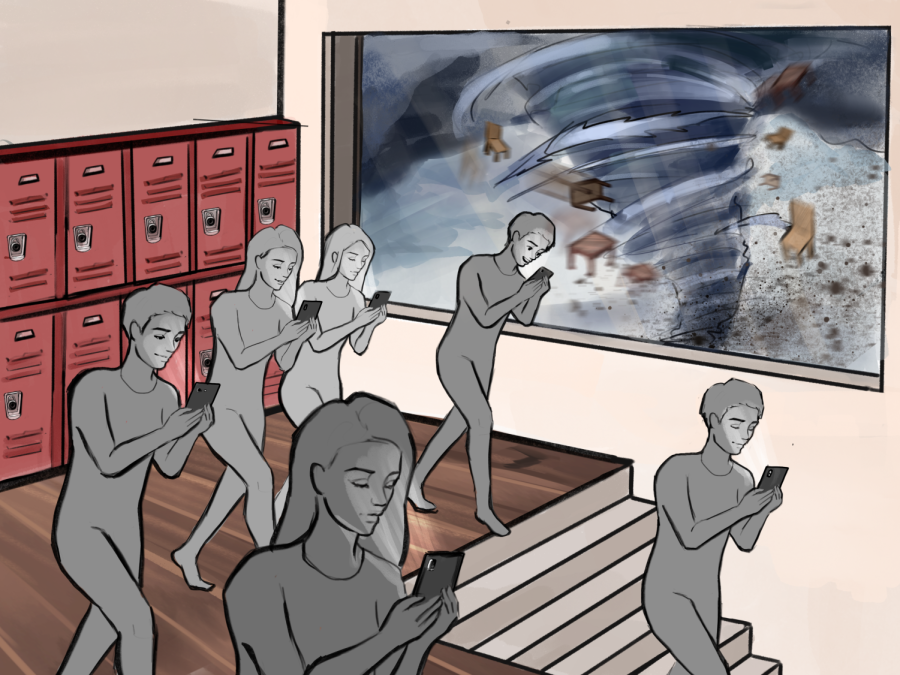Editorial: Tornadoes are serious, but we didn’t act that way
March 23, 2023
On Feb. 28, students and staff experienced an event unlike any other: a tornado warning while in school. During the middle of third period, a foreign sound echoed from the thousands of phones in the school. Students rushed to pick up their phones to find what the commotion was about. Seconds later, an alarm and announcement sounded throughout the building, informing the school that severe weather was incoming, and they should proceed to a safe location.
What followed was an abomination, clearly demonstrating the failure of any so-called “preparation” we’ve had in the past. Many students reacted with an unsettling apathy, simply going through the motions as if severe weather was an everyday occurrence. Hundreds of students had their phones out. Many were unclear of where to go and ended up clogging the hallways. During severe weather, students on the second and third floors are required to move to a safer location in the lower levels of the school. But with hundreds of students all shuffling down at the same time, staircases became bottlenecks throughout the process of evacuation. Throughout the school, the response from teachers was inconsistent too. Some teachers were actively yelling for their students to immediately get to a safe place, while some students said their teachers had no idea where to send students and vaguely referred them to the basement.
Clearly, Central’s preparation for severe weather needs work. What is immediately evident is that more training and communication is needed. For starters, making sure teachers are required to know the various evacuation procedures for the classrooms they teach in should be a priority. Right now, Illinois state law only requires a minimum of one severe weather drill per year, but frankly, Feb. 28 showed us once a year isn’t enough. Even if we don’t spend more time doing drills, a simple, quick explanation by a teacher to their classes at the beginning of a semester could refresh everyone’s memory of the procedures in place. Second, we must all treat the situation more seriously. We see the attitude of indifference shown by both students and staff toward all of our various safety drills. Everyone just slowly shuffles to their destinations, eyes on their phones. If we expect to respond appropriately during a real emergency, we need to do so during drills. Staff should communicate to students to get a move on and get off their phones. Adults must also clearly communicate these expectations with students. A simple message could have been communicated to the students during this time that would have helped efforts greatly: “Put your phones away.”
As mentioned, some of the routes were crammed during the process. Making sure that there is an even distribution of people throughout the various stairwells could help resolve this issue.
Another concern raised during the severe weather lockdown was the safety of students off-campus during a blended period. If a student is driving to a store or walking to Dunkin’, what are the expectations if they hear a tornado siren? This should be clearly outlined to students at the beginning of the semester in a blended class.
We were lucky in this situation that no apparent damage was done to the school or community. But a tornado has hit Naperville before and if the school approaches it in this same disorganized manner, we may not be so lucky. Increasing communication about procedures and policies between students and staff and reexamining these policies should be paramount as school and district administrators reflect on this incident. We really must do better.









John Aabram • Apr 6, 2023 at 12:10 pm
cope
Artem • Mar 23, 2023 at 2:01 pm
As somebody whose house got hit in the tornado last year, I was terrified when the sirens started to go off. I looked around absolutely shocked at how many people were so relaxed about this. Luckily there were plenty of adults I trusted to help me calm down. Would love it if more people took severe weather more seriously.